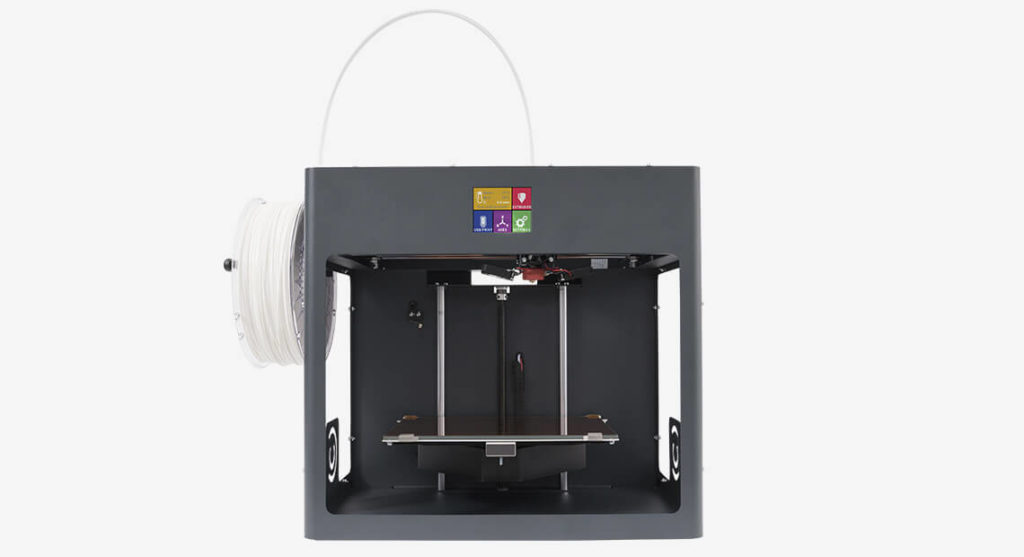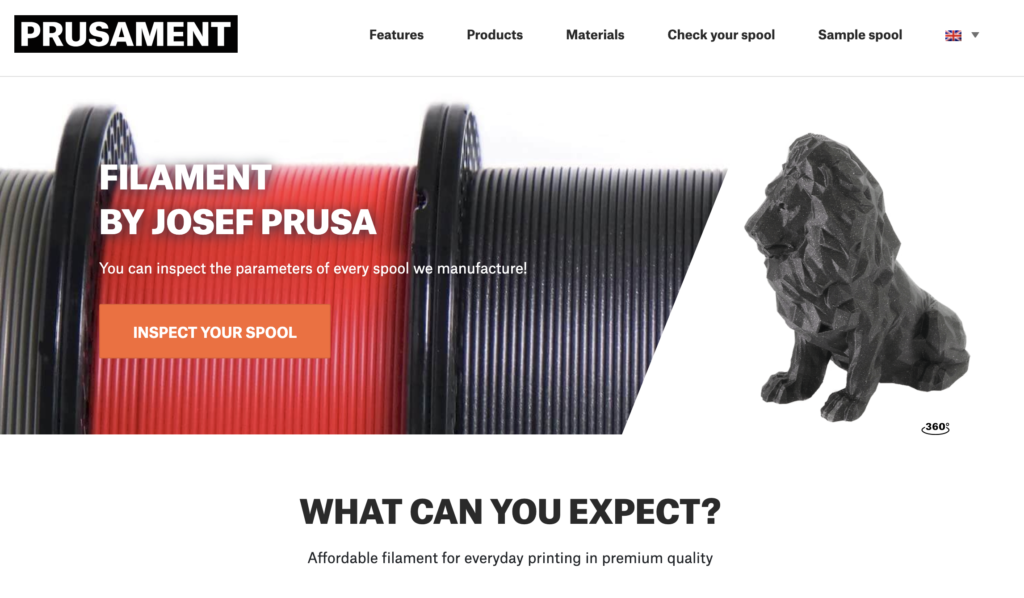In this 2021 Market Outlook, Trends, and Competitive Landscape for the Desktop Material Extrusion Market, we’re continuing our helicopter view of the desktop material extrusion or Fused Deposition Modeling (FDM, FFF) market. The goal is to give you some idea of the mechanics and dynamics behind the market, an understanding of the material extrusion competitive landscape, and an overview of what’s happening in the value chain. We’ll have a general outlook of this segment for the next calendar year, 2021. We’ll look at the market, systems, and sales for each segment and make recommendations as well as predictions.
General Overview
The desktop material extrusion market can be segmented into low-cost 3D printers, which we covered in a previous article, as well as mid-market desktop 3D printers, and pro 3D printers. In this article, we’ll specifically examine mid-market machines before publishing a follow-up article dedicated to pro systems, which will include a look at material trends and overall market developments for the desktop FDM/FFF segment.
Mid-market Desktop 3D Printers

This segment has desktop 3D printers that are from $800 to $2,000 in price. More quality, more features, more longevity, fewer technical issues, and more integration with software is to be expected here. A better overall experience and better support is what you’ll be paying for. Companies such as Craftbot and Flashforge are active in this segment.
Market

Players often ship from a few thousand to tens of thousands of units annually and the margin situation is better than in the low-cost segment. Some players with extensive engineering expertise have significantly higher margins than other players in the segment. In some cases, one company could have 400% higher margins than another. These printers are bought by consumers, students, universities, and companies. This segment is completely dominated by Prusa and its i3 printer. Prusa also sells filament directly, has a very high-quality offering, and a great brand. With a better business model and being completely privately owned, I’d expect them to continue to dominate this segment in the long haul.

Sales
Many sales are done indirectly in this segment through small local resellers or online companies. Amazon and dedicated 3D printer resellers play a big role in this market. Often absent from the low-margin printer market, these printers are often the entry-level systems that you can see in a 3D printing store, for example. Players here are sandwiched between an increase in capability in lower-cost printers and significantly higher investments required to build ecosystems.
Systems
This segment includes mostly high uptimes and fully featured printers who now work “out of the box” with wifi, touch screens, large build volumes, and support. The major trend here is the building of ecosystems and tighter integration with software. Finesse in 3D printer design and small iterative improvements are also present here with system quality improving significantly even over the past three years.
Recommendations
Companies in this segment seem to have a binary choice, sit still and get killed by Creality and Anet or move up. Many players in this segment consider themselves as not being able to or not wanting to “race to the bottom.” I would counsel them to try because, through smart engineering, Prusa can make a $349 printer, so why can’t you? Is there a path to those high volumes but with higher quality? Often companies reflexively decide that something is not for them, but through some kind of emotional gut response rather than truly rethinking how printers are made. In interviews, there is often no rationale beyond a feeling that low cost won’t work for them.
I would council many of these firms against moving up in the world. Some may make it, but to truly develop an ecosystem, to develop software, to build a world-class support organization means that you need excellence in your business. If you are unwilling or unable to bring in the people and pay for excellence and grow into an excellent organization, your chances of successfully moving up to the professional segment are limited.
Especially since sales often occur through channel, being a strong mid-market player around the $1,200 mark with good support and good quality will be a great place to be for some. There is a gulf emerging between user needs and the $200 printer and the $3,000 printer. A lot of companies, developing world businesses, and consumers will want to upgrade their printers and have something more capable but still adaptable. With the world getting more “closed” and expensive, there is a path here. Essentially, now there is not a lot of choice for a good quality printer around the $1,000 and $1,500.
If you can win in quality and make great systems that last a long time, you could become the de facto choice for educated home users, the developing world, and the education market. One worry for this path is that the industry on a whole doesn’t have universal quality or reliability statistics or arbiters. We don’t have a Kelly Blue Book, TuV or standard that tells everyone that you are in fact better. But, by sticking to what you know and doing well, you can fight your battle on your turf and not lose in something that you do not understand, such as software.
Critical Issues
This market risks heavy competition from lower-cost printers. This will be exacerbated by companies just selling themselves through features and not actual user experience and quality. Lack of certifications and corporate clients can also make it hard for this group to find enterprise customers in the future. Often the types of expertise that these firms will need to grow to the next level is not currently present in those firms. They have mastered juggling but will need to learn ballet to advance.
Recommendation for Competition
Essentially, know that many players are attempting to go Pro. They will announce the same Pro features, ecosystem, and software capabilities, but they will more than likely be poorer in execution. Without reference clients and a track record, these players will find it hard to gain in reputation.
2021 Outlook
This is going to be a stormy and confusing segment over the next 12 months. Lots of players from below will make feature-rich printers that will seem to approximate this segment, but will be significantly cheaper. Meanwhile, players in this segment will ape higher value printer features. This will mean that consumers in this segment will be confused. An ever-greater reliance on channel and close cooperation with channel may see winners emerge. This can only be the case if your existing channel is well placed and rich with leads in a trying time.
In our next article in this series, we’ll analyze the desktop FDM/FFF market as it applies to professional 3D printers, including overall market and material trends for the desktop FDM/FFF segment as a whole.
Subscribe to Our Email Newsletter
Stay up-to-date on all the latest news from the 3D printing industry and receive information and offers from third party vendors.
Print Services
Upload your 3D Models and get them printed quickly and efficiently.
You May Also Like
Metal Powder Supplier Elementum 3D Added to $46B Air Force Contract
Elementum 3D, a Colorado-based developer and supplier of metal powders used in additive manufacturing (AM), announced that the company has been added to the vendors list in the fourth on-ramp...
Ursa Major Lands $28.6M AFRL Deal for 3D Printed Draper Engine Flight Demo
The US Air Force Research Laboratory’s (AFRL’s) Rocket Propulsion Division at Edwards Air Force Base has awarded a $28.6 million contract to Ursa Major for follow-on work related to the...
3D Printing Financials: Rocket Lab’s Record-Breaking Year and Over 20 Launches Coming in 2025
Rocket Lab (Nasdaq: RKLB) closed 2024 with its best year yet. The company launched more rockets, signed more contracts, and expanded deeper into spacecraft and satellite production than ever before....
US Air Force Taps Beehive to Study 3D Printed Jet Engines
Propulsion 3D printing firm Beehive Industries secured a contract from the U.S. Air Force Life Cycle Management Center through SOSSEC. SOSSEC is a company that manages Other Transactions Authority (OTA)...

































